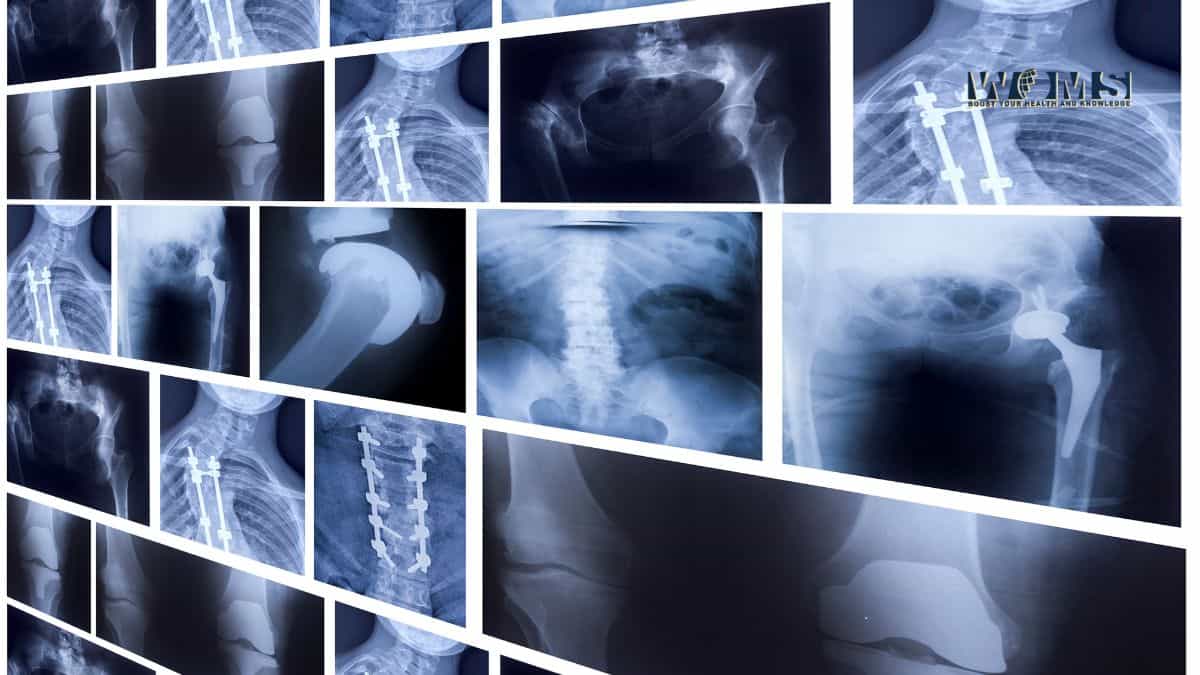Everything You Need to Know About Digital X-Rays

As technology advances, so does the practice of radiography. In the past, x-rays were taken using film that had to be developed in a dark room. This process was not only time-consuming, but it also exposed the patient to harmful chemicals.
Today, digital x-rays are the norm. These x-rays are taken using a special sensor that converts the image into digital data. This data is then stored on a computer, where it can be viewed immediately by the medical practitioner.
This blog post will discuss digital x-rays, their application, benefits, advantages over traditional X-rays, and more.
What Are Digital X-Rays?
A digital X-ray, or digital radiography, is a process that uses electronic X-ray sensors to produce images of the inside of the body. This type of technology is becoming increasingly popular as it offers several advantages over traditional X-rays.
For one, digital X-rays can be enlarged or reduced without affecting the quality of the image, making them ideal for use in medical research and diagnosis. In addition, digital X-rays can be stored electronically, which makes them easier to share with other doctors and specialists.
Digital X-ray systems are widely used in healthcare settings that experience high patient volumes, such as specialized imaging facilities and hospitals.
How Do Digital X-Rays Work?
Digital radiography makes use of x-ray-sensitive plates that directly record data during the patient examination, immediately transmitting it to a computer system without the utilization of an intermediate cassette.
These x-ray-sensitive plates are flat panel detectors that combine amorphous silicon detectors with cesium or gadolinium scintillators to convert X-rays to light, which is then translated by thin film transistors into digital data.
With digital x-rays, high-quality images are generated and transmitted without any delays to a computer screen. As a result, they provide a more accurate diagnosis and allow for more effective treatment planning.
The Benefits of Using Digital X-Rays
Digital X-rays are a game changer for the healthcare industry due to their exceptional quality, minimal radiation output, and portability. With digital X-rays, medical professionals can more accurately diagnose and treat many conditions at lower doses of radiation, making imaging safer for both patient and practitioner.
Additionally, the portability of digital X-ray systems places them in a league significantly above analog technology storage is much simpler due to the elimination of physical films, and transfer between colleagues is made quicker with an electronic file. Digital X-rays provide an overall better experience with fewer risks attached making them well worth considering in any healthcare setting.
What Are the Advantages of Digital X-Ray over Normal X-Ray?
Digital X-Ray and Normal X-Ray are both important diagnostic tools used in medical imaging. However, it is important to understand the differences between them.
Better Image Quality
The biggest advantage of digital X-rays over normal X-rays is that the images produced with digital X-rays are significantly higher quality than those produced with normal X-rays, which means they provide a much more accurate and detailed assessment of the areas being examined.
Faster Processing Time
With digital X-rays, images are typically available almost instantly upon capture, eliminating the need to develop the traditional film which can be quite time-consuming. This immediacy saves radiologists a tremendous amount of time and helps streamline the process by avoiding potentially lengthy delays between capturing the image and receiving a readout of what the image depicts.
Demands Less Resources
One of the most compelling advantages of digital x-ray over normal X-Ray is that it requires fewer resources. Not only does this mean lower costs overall for medical institutions, but also more time and resources to focus on other aspects of healthcare delivery.
Digital X-Ray machines require less energy, making them not only cost-efficient, but also kinder to the environment due to their lower energy consumption levels. Furthermore, fewer physical x-ray films mean shorter processing times, which translates into a better overall patient experience due to shorter waiting times in clinics.
Allows for Higher Quality Care
The ability of Digital X-rays to capture images in higher resolution and greater clarity allows healthcare providers to easily identify health issues with more accuracy and efficiency, thereby preventing potential misdiagnoses and providing better care for patients.
Furthermore, this digital benefit assists in providing patients with more effective monitoring of any medical condition which may otherwise require further testing. Additionally, it allows for easier and quicker diagnosis and expedited treatment that could otherwise take an extended amount of time with normal X-ray processes.
Relatively Easy to Use
Compared to normal X-rays, digital X-rays offer an advantage in user-friendliness. The process of capturing and viewing images with digital X-rays is relatively easy compared to traditional forms which require a darkroom, chemical baths, and other prolonged procedures.
With digital X-rays, radiographers can capture the image, viewers can zoom in or out on specific details to analyze them, patients receive instant results, and results can be stored electronically for later use. All these are not possible with traditional X-rays where prints need to be done manually.
Quick Image Sharing
By using digital scanning, medical images can be quickly and easily sent from one place to another – whether it be across a hospital or even from one country to another. This allows for improved communication between doctors and medical professionals, which in turn leads to better patient care.
With a speedier system for sending and receiving data, it becomes easier for healthcare personnel to obtain second opinions, view archives, and spot urgent cases right away.
Easy Image Storage
Another big advantage of digital X-ray over normal X-ray is that it offers easy image storage options. These digital pictures can be stored in a variety of ways and retrieved quickly for faster diagnosis and treatment decisions.
Furthermore, because images for digital x-rays can be easily stored and transferred electronically, physicians have access to a patient’s imaging data at any given time whereas manual storage of traditional film x-rays often leads to mistakes or lost records.
How to Reduce Radiation Exposure When Taking Digital X-Rays
There are various ways to reduce radiation exposure during digital x-rays, such as using a lead shield whenever possible; adjusting the milliamperage setting to the appropriate level based on the age, size and thickness of the patient; and positioning the x-ray tube head at a 90 degree angle to the area being examined.
Additionally, increasing the distance between the radiation source and the patient can help minimize exposure levels; this is accomplished by extending the patient’s headrest so that it is close enough to ensure a quality image, while far enough away to decrease radiation.
Finally, it’s important that protective aprons only be worn if necessary and that patients wear eye protection such as a thyroid collar or leaded eyewear when appropriate.
By utilizing each of these strategies in combination with one another, medical professionals can dramatically reduce radiation exposure when taking digital x-rays without sacrificing essential diagnostic images.
Tips for Getting the Most Accurate Results From Your Digital X-Ray Images
For the best digital x-ray imaging results, it’s important to avoid motion blur, pixelation, and improper technique. Take the time to ensure that the photo you take is properly focused on the target and free of any movement or distortion.
You can also get better results by increasing resolution or adjusting settings for optimal light balance and frequency for the subject. Controlling your environment is key because undesirable factors like nearby lights, raised heat levels, and electromagnetic interference can disrupt your images.
Once these settings are adjusted for optimal performance, all you have to do is make sure you’re using a good quality digital x-ray machine – one with high power outputs and a robust detector capable of handling increased patient load safely while producing sharp images quickly.
By following these tips, you can be confident that your digital x-ray images will yield accurate and reliable results every time.
How to Choose the Right Digital X-Ray System for Your Practice
Choosing the right digital x-ray system for your medical practice can be a daunting task. It requires comprehensive research and an understanding of exactly what technology will best serve the goals of your practice.
First, determine the budget you’ll allocate towards a new system and then compare the various features available among different systems. Are there specialized tools or performance benefits that meet unique needs? Also consider whether additional services are provided, such as thorough training and ongoing support and maintenance.
Lastly, consider how easy it is to integrate your chosen system with other existing software so that you can have a centralized database for patient records, images, and reports. Taking the time to objectively assess all of these factors before making a decision will ensure that you get the most out of the x-ray system for your practice.
Conclusion
Among its many benefits, digital x-ray captures images with unparalleled clarity compared to film X-rays, allowing specialists to diagnose with greater precision and accuracy. With this, patients are able to receive better health evaluations through enhanced diagnostic capabilities and minimal risk of harm.
If you’re interested in setting up digital x-ray at your diagnostic center, you can rely on Medwish for the purchase of your equipment. To find out more about our services, get in touch with us immediately.




